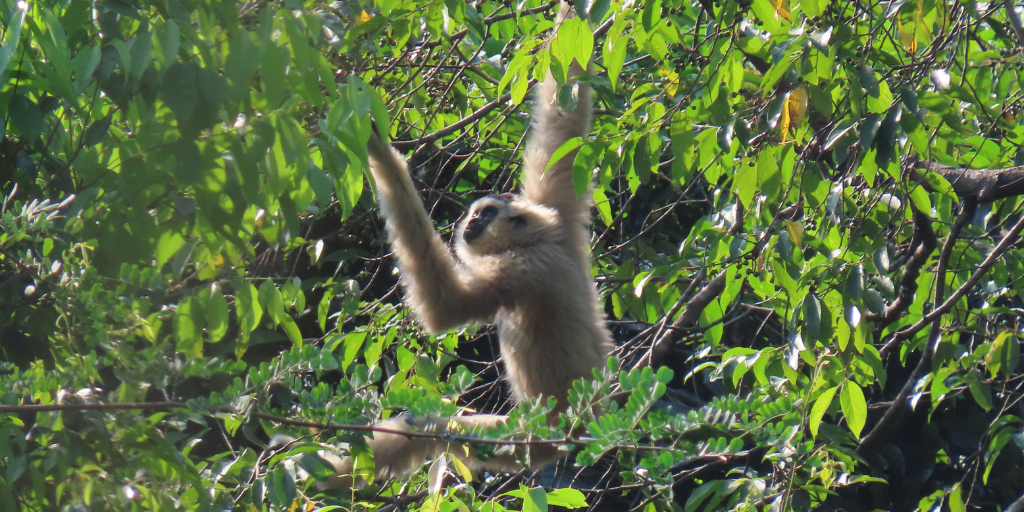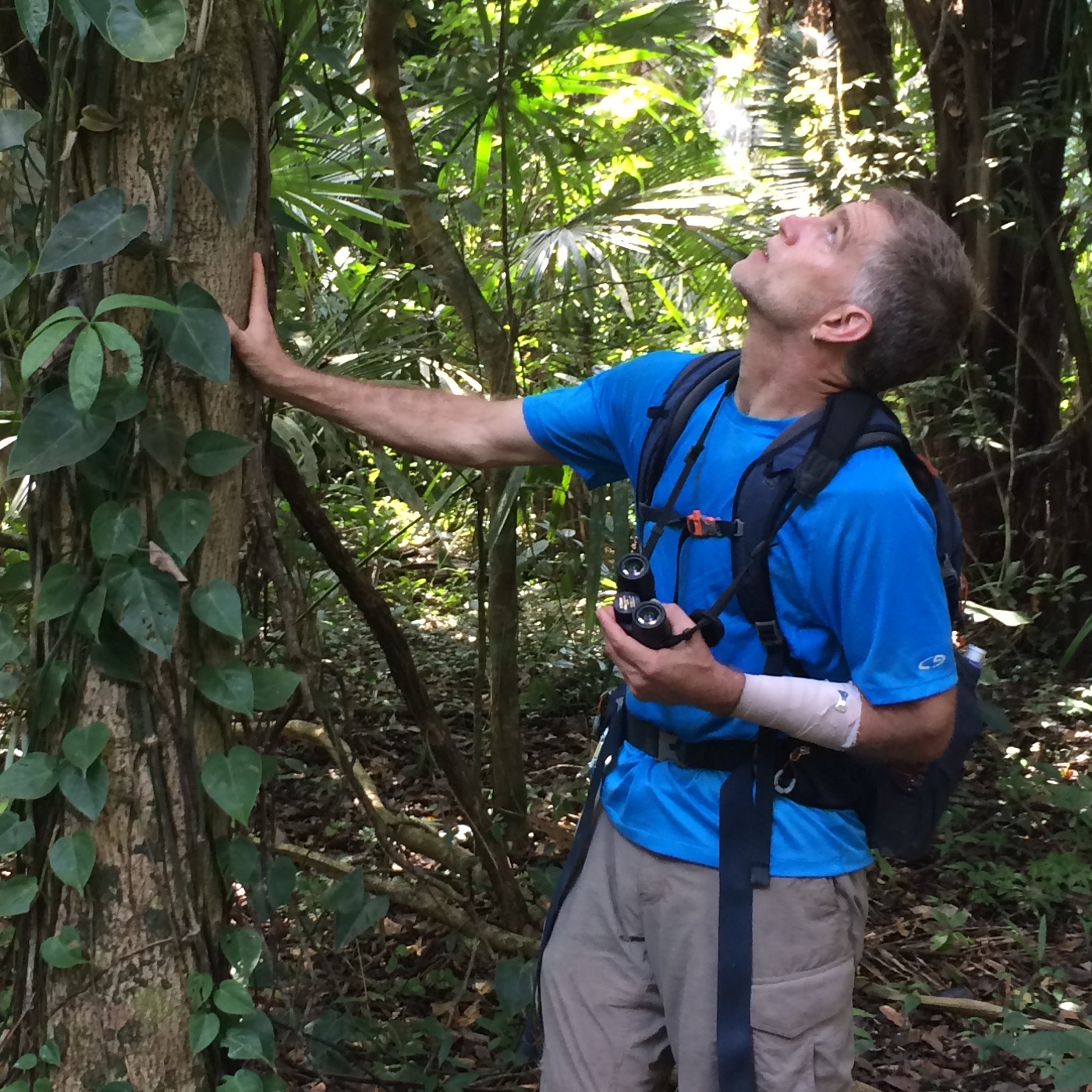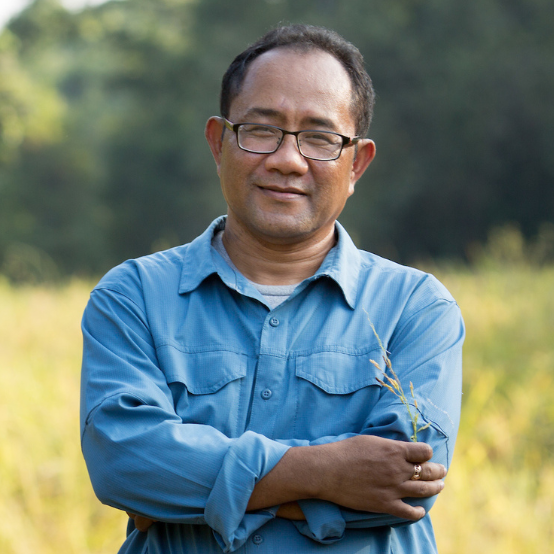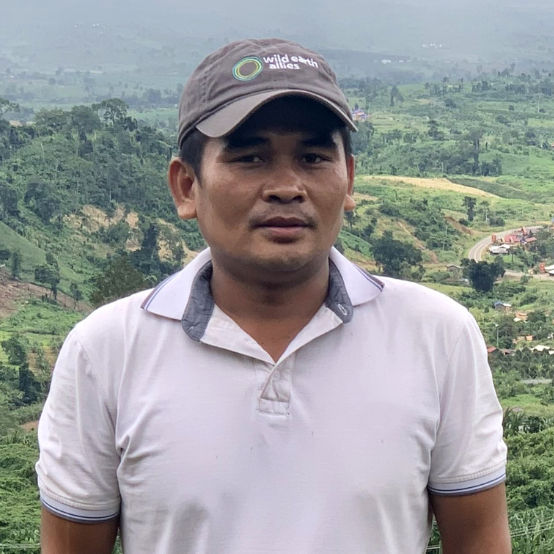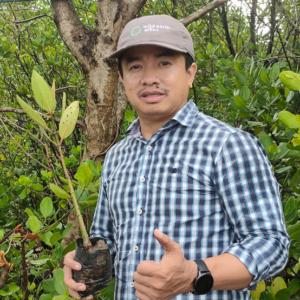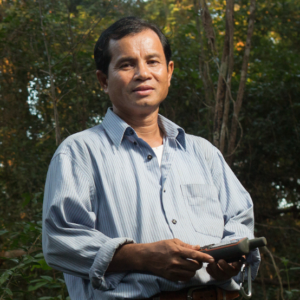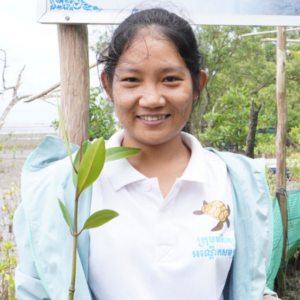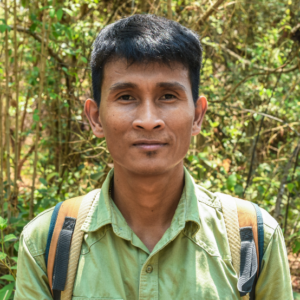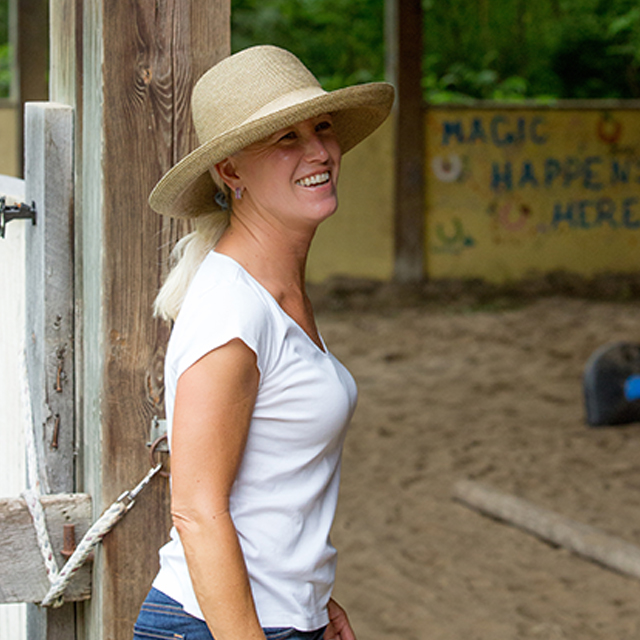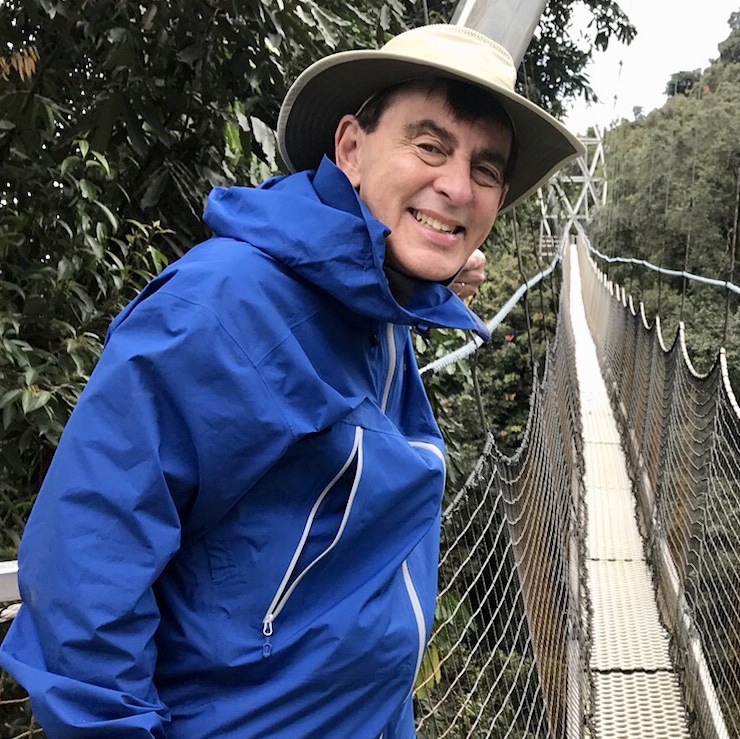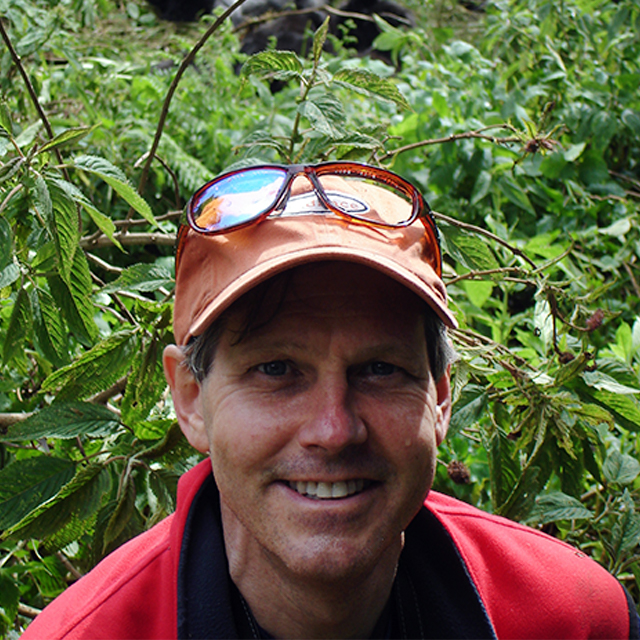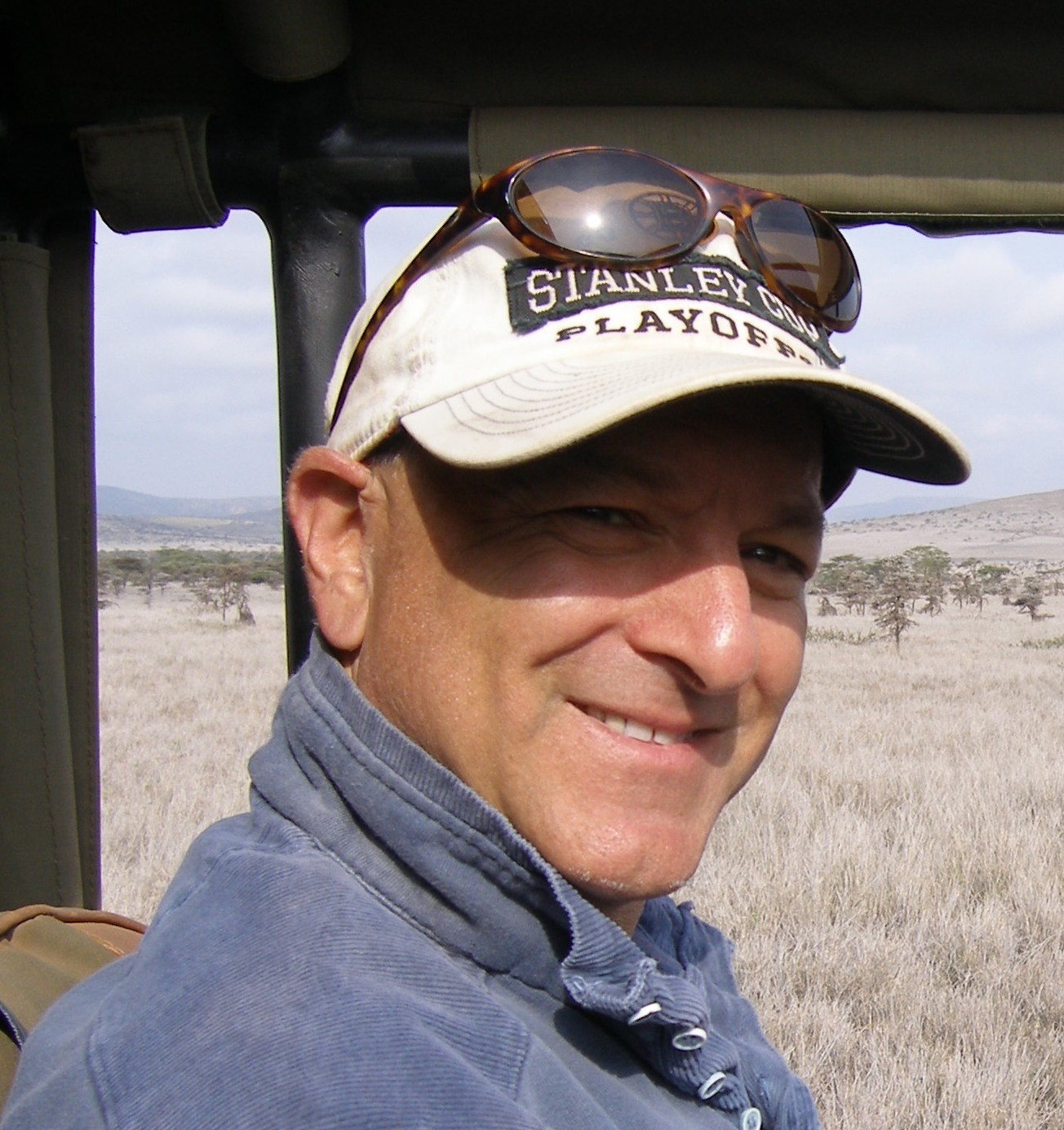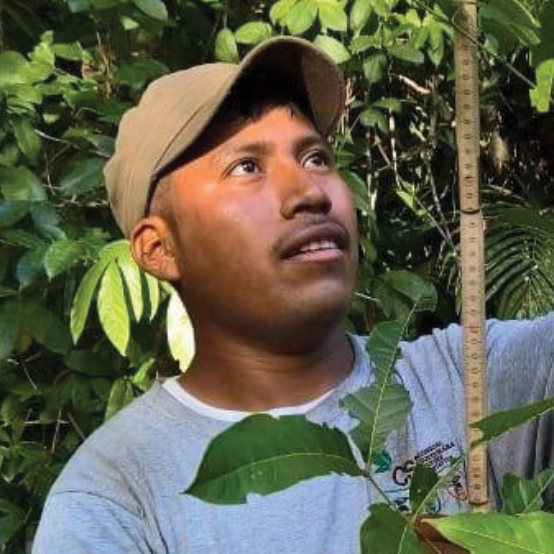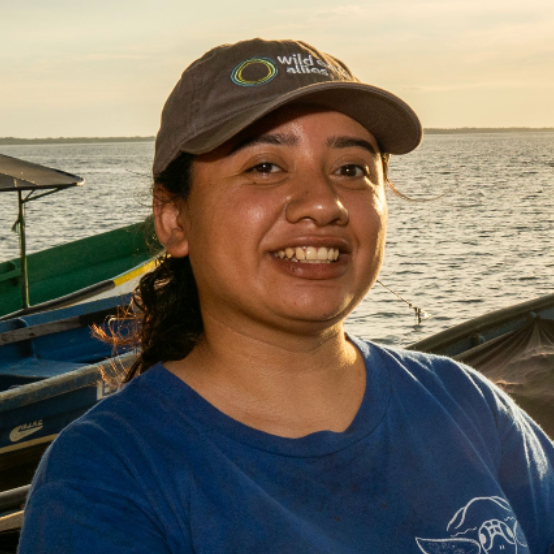Wild Earth Allies is proud to launch our Allied Insights series, a platform for sharing research, field learnings, and new thinking from our collaborative conservation work around the world. Grounded in local values and co-created with trusted partners, each installment explores how culturally aligned, place-based approaches can help turn the tide of biodiversity loss. This is where evidence meets action, and shared wisdom becomes a tool for global impact.
Our first feature highlights recent discoveries from Cambodia’s Prey Lang Wildlife Sanctuary, where ongoing research is reshaping our understanding of endangered pileated gibbons.
Cambodia: A Global Stronghold for Pileated Gibbons
Half of the world’s pileated gibbons have disappeared in the past 50 years. Today, more than two-thirds of the remaining population—about 47,000—live in Cambodia. Prey Lang Wildlife Sanctuary, a lowland evergreen forest in northern Cambodia, is an important refuge for the species.
A 20-year Knowledge Gap
Although earlier studies estimated 10,000 gibbons in Prey Lang, the population had not been surveyed in more than 20 years. During that time, shrinking forest cover severely fragmented pileated gibbon habitat. In response, Wild Earth Allies launched a new monitoring project to assess gibbon numbers in Prey Lang.

A protected area ranger (left) and an Indigenous Kuy community member (right) collect data on pileated gibbons in Prey Lang.
New Surveys Reveal Hopeful Numbers
Our initial surveys—led by Conservation Manager Neang Thy, in collaboration with Indigenous Kuy community members and the Ministry of Environment—revealed a higher-than-expected number: an estimated 5,900 gibbons in one core area of the forest.
Early data from surveys in additional areas of Prey Lang suggest the sanctuary holds more than 12,000 gibbons. These findings confirm Prey Lang as a global stronghold for this endangered ape.
Our surveys show that Prey Lang is a vital refuge for pileated gibbons, not just for Cambodia but for the survival of the species globally.
Neang Thy, Cambodia Conservation Manager, Wild Earth Allies

A male pileated gibbon looks out from the canopy in Prey Lang.
Linking Gibbon Diet to Reforestation and Livelihoods
Our team also studied the diet of pileated gibbons to better understand their habitat needs. We found that more than 80% of the plants gibbons eat are also vital to the Indigenous Kuy people for food, medicine, and livelihoods. These insights guide our Gibbon Trees project, which grows key plant species for both gibbons and local communities. Seedlings are cultivated in community-run nurseries for forest restoration and daily use.

Intact seeds from the fruit of Madhuca butyrospermoides were among those found during the study.
Our Allied Insights report, Pileated Gibbons of Prey Lang Wildlife Sanctuary, offers a deeper dive into the science behind the work, while our interactive story map highlights key findings through maps, visuals, and audio recordings from the field.
This collaborative effort reflects how we build deep partnerships, co-create knowledge, and invest strategically so that local conservation efforts are seen, heard, and well-funded.
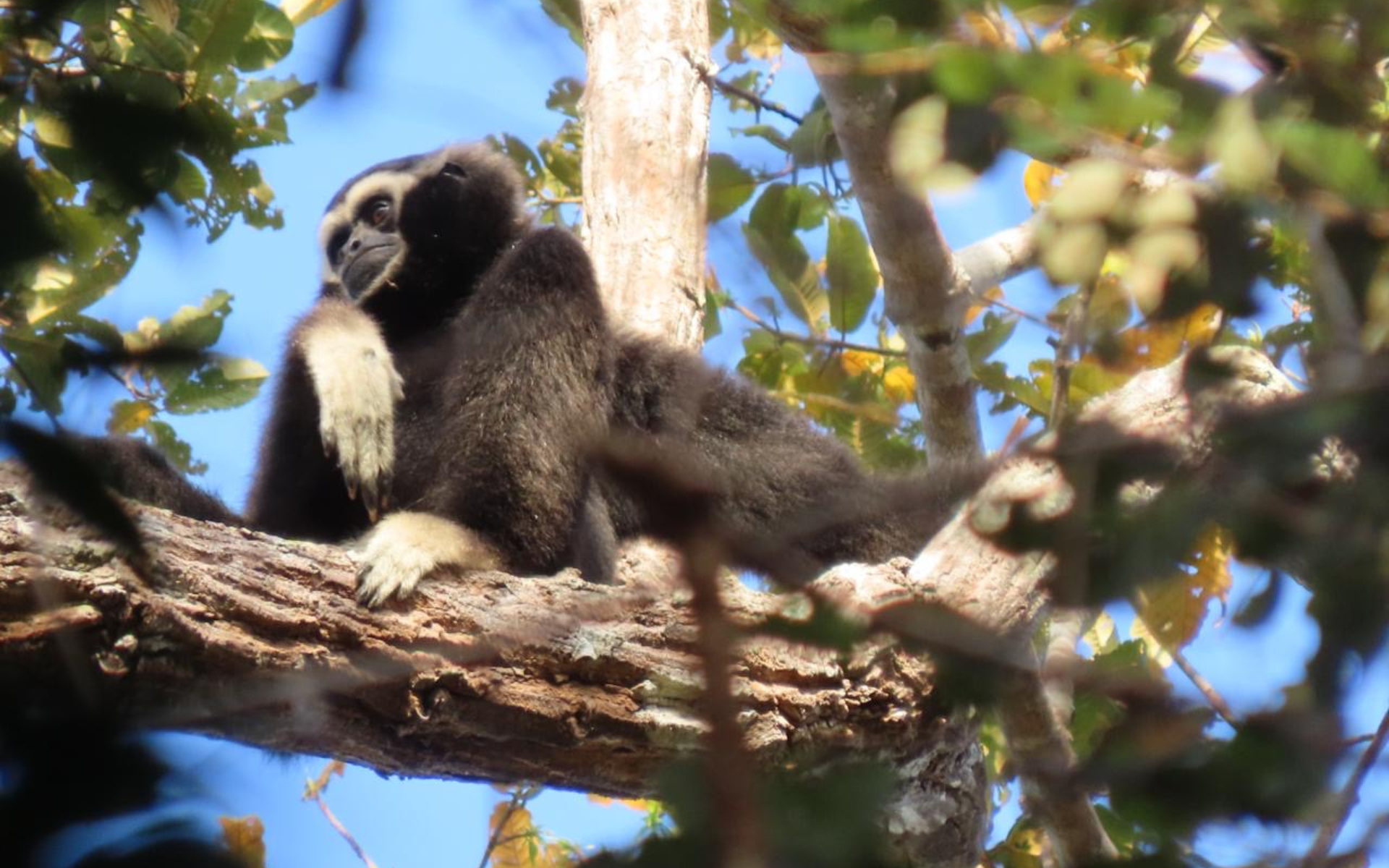
A male pileated gibbon sits in a tree in Prey Lang Wildlife Sanctuary.
Photos by Neang Thy and Vireak Samorn

